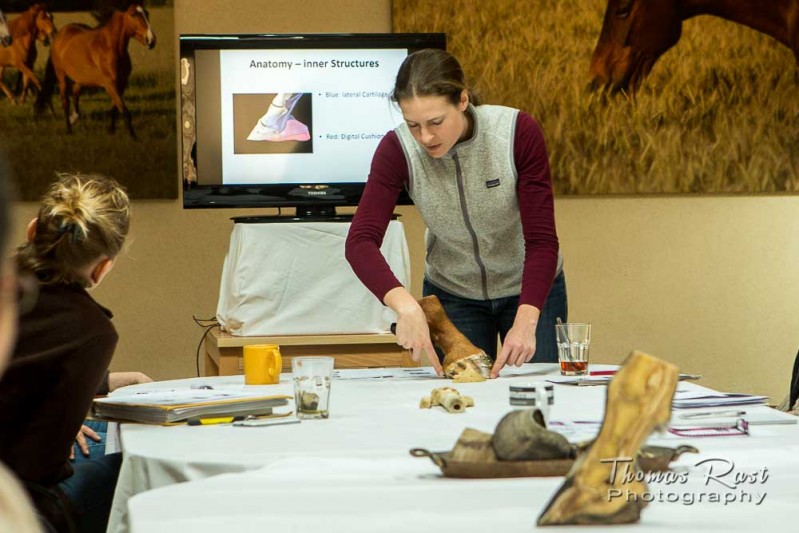Dissecting a Hoof – why would you benefit of it?
Last Saturday, 13th February 2016, we offered a course about the inside of the equine hoof – dissecting a foot. The first reaction of most people, especially horse owners is quite reserved. Some could never imagine to take apart the hoof of a horse, a once loved and respected animal. Some are afraid of eventual smell or the sight of dead meat/blood.
Let me share a different picture about it. I have done by now 6 dissections. I have been reserved in the beginning as well, afraid of the smell, of the sight, and of course it felt weird to take apart a hoof of a horse I once knew. But each single time I was fascinated, it was interesting and also beautiful. Each time I gained a deeper understanding of how the hoof functions. The Hoof is simply a stunning piece of nature’s engineering. Only by having a close look into the inside of it, I could truly understand it, get a clearer picture of how each single structure takes part in each step the horse takes.
Why should a farrier/trimmer/vet never cut into the live sole plane or carve out the sole to gain more concavity? During my first dissection I had a little shock on how thin even a healthy sole is – I knew that the horse was very sound when it was still alive. It is just about 10 mm thick! Imagining what would happen if it was thinned out, even just to remove the little layer of dead sole would cause the horse to be sore! Please don’t get me wrong, there are some rare cases where sole needs to be trimmed.
Click into the picture to open the lightbox to see the image descriptions and leave a comment!



